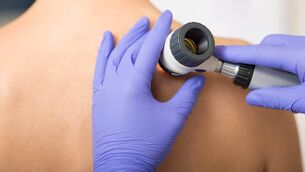Release of kites breeds optimism
FIFTY-THREE red kite chicks were brought to Ireland from Wales this summer. Half were sent to a secret location in Co Wicklow; the others went to Co Down. Thirty kites were released in Co Wicklow last year. Project leader, Damian Clarke, couldn’t keep track of every bird, but he thinks survival is high. Only two deaths are known; a bird was shot and another hit by a train.
Being struck by vehicles is a hazard for kites; they feed on road-and-rail kills. This year’s arrivals spent the summer in pens, where they were fed on dead rabbits and crows, food items they must find for themselves after release. Visiting the pens this month was magical; the lively young kites are magnificent. Last Monday, with their wing tags and little, fitted radio transmitters, the youngsters were let loose. The northern birds are also on the wing. Young kites are fed by their parents after they leave the nest, so food will be provided for the youngsters over the next few weeks.
Although the red kite is big, it’s light for its size. Like huge terns, with a wingspan of up to one and three quarter metres, these effortless fliers exploit the winds and air currents. Their most conspicuous feature is the red, deeply notched tail. Damian is confident the kites will prosper here; the habitat is similar to that of their native Wales. Precocious individuals breed at two years of age and we might have a nest or two as early as next year.
Kites were common in Britain, and probably Ireland, in medieval times. Scavengers who even lived in cities, they were tolerated because they removed offal and filth from the streets. In the 18th century, the towns were cleaned up, leaving little for kites to eat. The birds also took the odd game chick, which led gamekeepers to persecute them. Carrion feeders are easily poisoned and the red kite became extinct in Ireland and most of Britain. In a small area of Wales, a few pairs survived.
In the early 1900s, just four breeding pairs remained. Egg collectors then became a major threat, so conservationists removed the eggs from vulnerable nests, replacing them with those of chickens. The kite eggs were hatched under a tame buzzard and the young chicks returned to their parents’ nest. By 1978, there were 34 nests, and, by the early ‘90s, there were more than a hundred.
Reintroducing kites, though difficult, is more straightforward than bringing back eagles; their chicks are easier to obtain and kites start breeding sooner. Since 2001, 54 golden eagle chicks from Scotland have been released in Glenveagh National Park, in the first golden eagle reintroduction project ever attempted. Progress has been slow, but these are uncharted waters and project leader, Lorcan O’Toole, remains optimistic. A pair produced eggs two years ago, but they failed to hatch. A chick was raised successfully last year, proving that reintroduction is feasible. The pair did not nest this year, which was disappointing, but another pair did, although unsuccessfully. Lorcan is not discouraged; young golden eagles, he points out, seldom breed successfully. Their performance improves as they get older.
The eagles have been welcomed in Co Donegal. However, the same can’t be said for their white-tailed cousins introduced to Kerry. Of the 15 Norwegian sea eagles released there last year, four have been poisoned. Putting out poison near where young eagles are being released, ostensibly to kill foxes, is an act of mindless vandalism. Will the Norwegians keep sending us their valuable birds if the slaughter continues? Project leader, Alan Mee, assures me the donors are not discouraged and 20 more chicks arrived this year. Establishing the white tails is a daunting task; the first serious attempt at reintroduction, in Scotland, began in 1975, but it was 10 years before a pair nested successfully. The Wicklow re-introduction is organised by the Wildlife Service, the Golden Eagle Trust and the Welsh Kite Trust. The Royal Society for the Protection of Birds co-ordinates the scheme in Co Down. The projects are supported by the Department of the Environment and the Heritage Council.
* Sightings of birds of prey with wing tags: report to Damian Clarke, 086-3284463; damianclarke@goldeneagle.ie.















